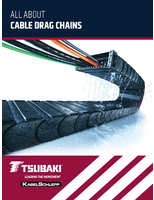How to Establish Technical Requirements
Brainchild Engineering
How to Establish Technical Requirements
By: Dan Engerer, David Richelson
You want help in realizing your product or innovation, but you aren't sure what to do next. One of the first steps in bringing your idea to life is to define it in clear, quantifiable terms. We call these terms "Technical Requirements". They are a critical part of any product design endeavor. They shape performance, cost, and virtually all other aspects of your project. But what exactly are they, and how does one establish them?
Technical requirements are simply definitions of what you want in your end product. They are your "must haves" (but can also include your "wishlist" as well).
If your technical requirements are left undefined or ambiguous, then engineers have no choice but to design based on their own judgement and/or research. While common-sense helps to fill in any gaps, a lack of definition leaves the possibility of miscommunication.
To establish your technical requirements, we recommend that you list out as many important details that you can think of. Once agreed upon, they become part of your contract. If requests are added in the middle of the project, we cannot always guarantee that we will be able to add them (or, they may take more work and thus more cost than originally expected).
It can be challenging to quantify and communicate requirements to people who are not yet familiar with your idea; your ideas may be crystal clear in your own head, but they're a mystery to everyone else. To help, we've created a list of suggested areas to think about when defining your technical requirements:
Suggested Topics to
Define
Geometry
-Max/min mass
-Max/min size
-Shape
Durability
-Maximum load
-Drop/impact
-Minimum lifespan
Performance
-Power input/output
-Efficiency
-Speed/Torque
-Capacity
Safety
-Certification
-Level of safety
Electrical
-Power supply (battery, outlet, etc.)
-Battery life
-Power supply (voltage, current, etc.)
Environment
-Temperature
-Waterproof/resistant
-Pressure
-Chemical
-Corrosion
-EMI/EMC (electro-magnetic compatibility)
Cost/commercial
-Target sale price
-Target cost
-Expected production volume
Appearance
-Theme (modern, minimalistic, stylish, utilitarian, tactical, etc.)Â
-Color
-Texture
Design for Manufacturing
Different manufacturing methods are economical at different scales and will affect “Design for Manufacturing” efforts. For instance, CNC machining has great precision and is economical for 100-1000 pieces, while injection molding is great for complex shapes but is only economical for 5,000+ pieces. Greater quantity requires a closer inspection of each feature. At 5,000 pieces, even a couple of extra grams of material can cost 1,000’s of dollars.
For more information on design for manufacturing, see: http://blog.fictiv.com/posts/how-to-increase-manufacturing-efficiency-with-design
In Conclusion
The more technical aspects you specify, the more closely we can match your vision. We are confident that we can exceed your expectations at Brainchild Engineering; we just need to know what they are!
Don't worry if you don't define every single feature. We can help you to complete your list if you need assistance or feel that it needs more.
Dan Engerer
Principal
David Richelson
Project Engineer
www.brainchildengineering.com
+1 (248) 962-3612




